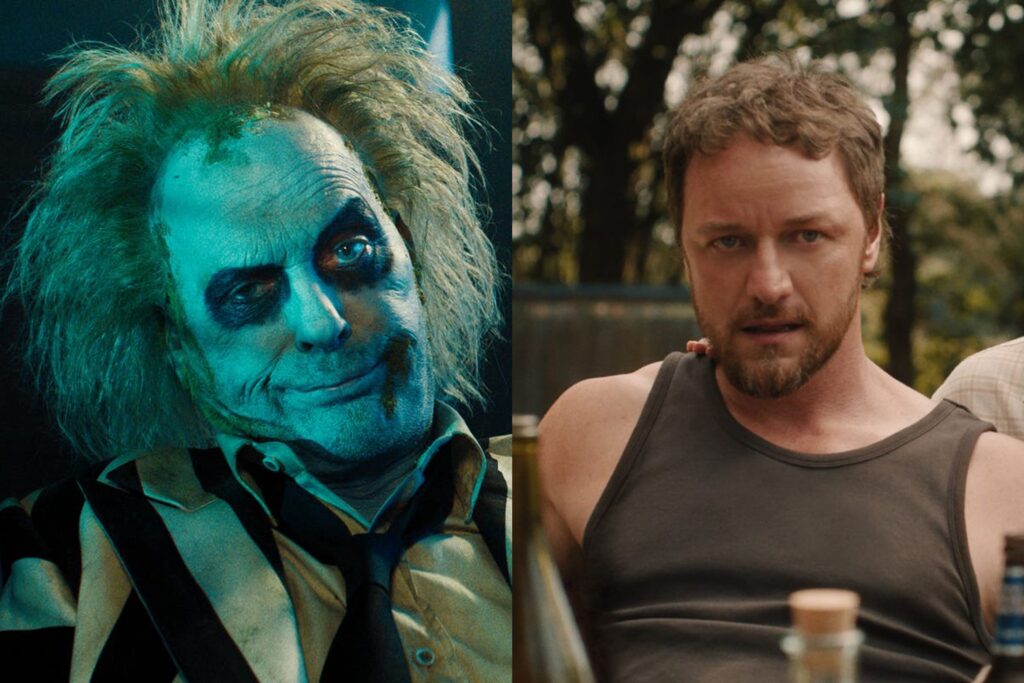
One of the most common rhetorical questions you’ll find on the internet, posed in response to the green-lighting of a new movie, is “Who asked for this?” It’s a derisive expression meant to impugn the upcoming film’s artistic integrity and belittle its commercial viability, even if it really functions as a statement of personal taste; the literal answer to the question is invariably, “Lots of people, just not you.” It’s also correlative of asking whether a picture is “necessary,” which is equally foolish. Strictly speaking, no work of art is necessary because we’re talking about entertainment, not food or shelter; philosophically speaking, art is absolutely necessary because it provides us with pleasure, anger, knowledge, and the opportunity to get mad at people online when they disagree with us. We may not need movies to survive, but to quote the captain from Wall-E, I don’t want to survive—I want to live.
And yet: In our era of perpetual IP churn, it’s occasionally worth pondering why certain pictures are made, and whether their cinematic execution can transcend their facially dubious justification (which is, of course, that studio executives hope they might make money). The two movies currently atop the domestic box office, Beetlejuice Beetlejuice and Speak No Evil, inspire this sort of metaphysical musing, given that they’re typal cousins: the long-delayed sequel to a beloved classic, and the English-language remake of an acclaimed foreign work. They both have their virtues; they both also raise questions about whether they should exist at all.
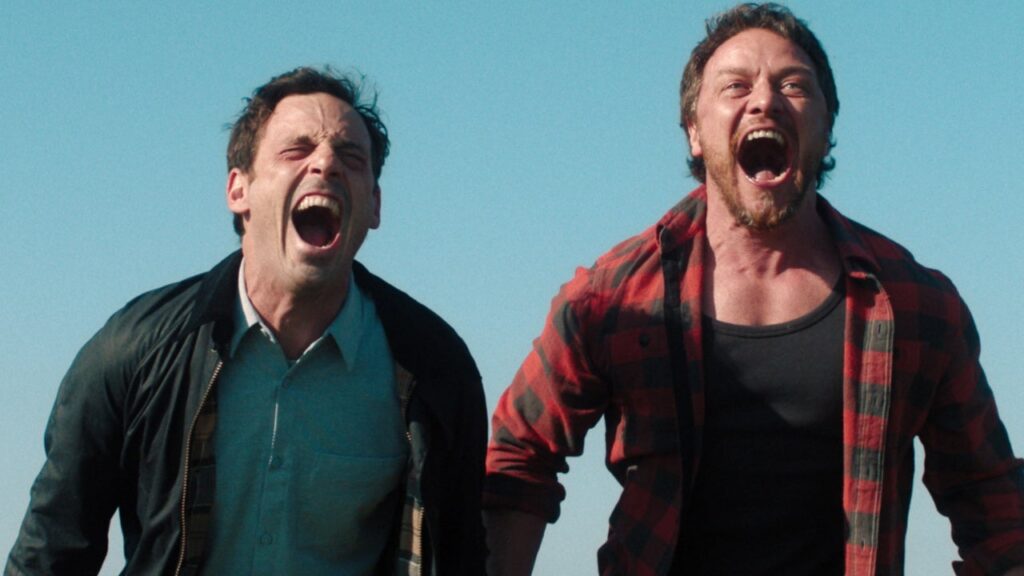
Of the two, Speak No Evil—James Watkins’ polished update of Christian Tafdrup’s taut 2022 Danish thriller of the same title—occupies the more questionable subgenre. Mind you, this doesn’t mean it’s inherently bankrupt. After all, the list of celebrated auteurs who have successfully borrowed from other countries includes Christopher Nolan (Insomnia), David Fincher (The Girl with the Dragon Tattoo), Steven Soderbergh (Solaris), and even Martin Scorsese (The Departed). Certain staples of American cinema, from Some Like It Hot to The Magnificent Seven to The Ring (not to mention Godzilla), have their roots in other parts of the globe. And I’m personally partial to a number of ostensibly duplicative movies—The Birdcage, Vanilla Sky, Let Me In—that owe a debt to their foreign forebears.
Still, there is something vaguely barbaric about Hollywood’s practice of marauding its way through other continents, razing local theaters and seizing their treasures to be refashioned into more palatable properties for subtitle-phobic audiences. Squint, and you can make out the rationale: Viewers tend to be ignorant of foreign pictures, so the best way to improve awareness is to conduct a sort of remodel, using the prototype’s narrative as a blueprint but dressing it up with recognizable, homegrown stars. (A better idea might be to just spend more money marketing and distributing the original films, but let’s not talk nonsense.) It’s a debatable strategy that fails more often than not, resulting in Frankensteinian efforts that range from feeble (Diabolique, Secret in Their Eyes) to puzzling (The Vanishing, Funny Games) to simply irrelevant (remember Spike Lee’s Oldboy? Neither do I).
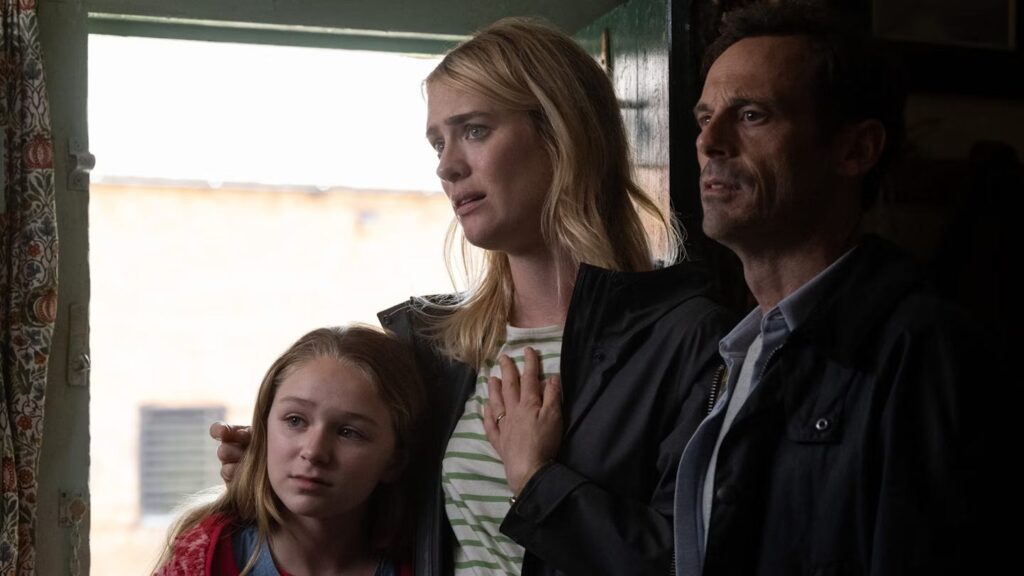
But is it even fair to analyze a remake like Speak No Evil in comparison to its predecessor, rather than on its own terms? Remember, most of the customers who bought tickets this past weekend presumably never saw the original, whose stateside release was so paltry it didn’t even register on industry tracking sites (like most compatriots, I watched it on streaming); its relative obscurity is arguably the main reason this new version exists. Judged independently, Watkins’ movie is pretty good for most of its runtime, with strong performances and a steady, disquieting build of tension. It only stumbles in its last act—when, not coincidentally, it finally departs from its source material.
Most pleasurably, Speak No Evil operates as a showcase for James McAvoy, who relishes the chance to tarnish his pretty-boy image. (And not for the first time—past examples include Filth, Split, and Atomic Blonde.) He plays Paddy, a brash and free-spirited doctor who enjoys being the life of the party, even as he constantly rebels against societal convention. Paddy’s carefree swagger catches the attention of Louise (Mackenzie Davis) and Ben (Scoot McNairy), a couple vacationing in Italy with their 11-year-old daughter, Agnes (Alix West Lefler). Approaching middle age and wrestling with the usual crises—professional ennui, emotional infidelity, the interminable lifespan of their child’s favorite stuffed animal—Louise and Ben quickly regard Paddy and his vivacious wife, Ciara (Aisling Franciosi), with a mixture of disbelief, jealousy, and curiosity. So when these London-based expats receive an invitation to spend a week at their new friends’ rustic country home, they summon the will to accept.
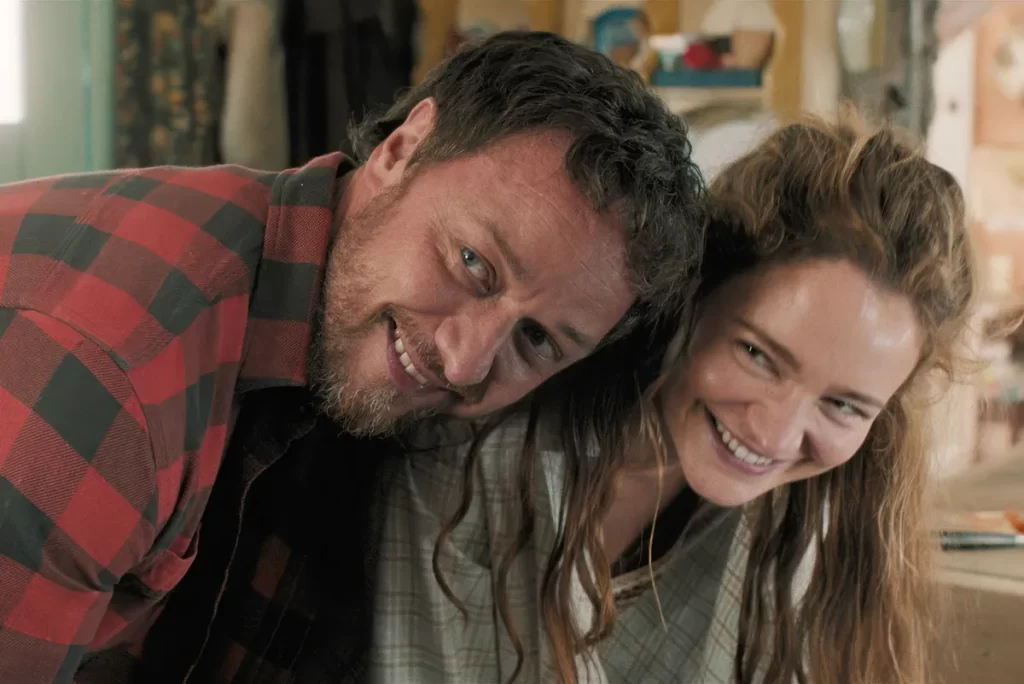
What follows is part comedy of manners, part social satire, all underlaid with the encroaching dread of a horror movie. For the most part, Paddy and Ciara are welcoming, but they also engage in an escalating series of micro-aggressions: needling Louise about her vegetarianism, admonishing Agnes for not eating her greens, even pantomiming oral sex in public—to say nothing of abusing their own mute son (Dan Hough). The film’s suspense lies not just in divining the hosts’ true intentions regarding their guests, but in exploring the collision between learned decorum and base instincts and desires. It’s a slow boil where you’re constantly waiting for the boom.
Watkins stages most of this effectively, leveraging his actors’ skill sets for maximum unease. McAvoy, happy to show off his vine-like arms, is scarily convincing as a rapacious beast who flashes just enough wolfish charm to disguise his innate brutality; McNairy, in contrast, is the perfect beta male, all weakness and shame and glowering resentment. Nimbly balanced between these poles is Davis, who mingles decency and tenderness with bafflement and impatience; she and McAvoy engage in a delicate two-step that blends civilized behavior with latent ferocity. The scene where Paddy promises to support Ben while the latter climbs a ladder, Louise watching fretfully and on the cusp of intervention, drips with tremulous anxiety.
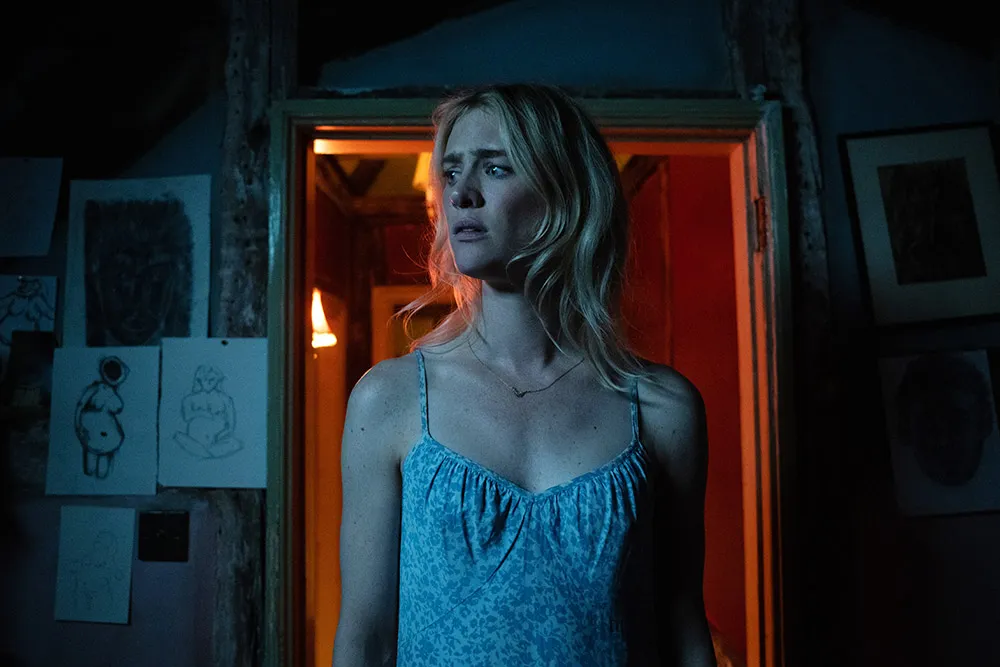
And then… look, I don’t envy Watkins’ predicament here, even if it’s one of his own making. (Be warned, spoilers follow.) The original Speak No Evil is most memorable for its black-hearted ending, in which Louise and Ben’s Danish surrogates are viciously murdered while their daughter is kidnapped and mutilated, consigned to a (presumably short) life of misery with her captors. Rather than replicating this cold, dark passage (and risking even stronger accusations of mimicry), Watkins pivots sharply, turning up the temperature and throwing his warring clans into a violent fracas that plays out as a shitty version of Straw Dogs. Weapons are wielded, skulls are cracked, and the suffocating atmosphere of despair is replaced by the phony assurance of conventional triumph.
It sucks. It is also, as it happens, the only element of this Speak No Evil that’s appreciably distinct from its progenitor. In essence, Watkins has learned the right lesson—if you’re going to remake a good movie, you need to meaningfully change it in order to make it your own—and has executed it in the extremely wrong way. It’s a bitter irony, as the 2024 version of Speak No Evil ultimately functions as a cautionary tale of what happens when you meddle with forces beyond your control—namely, movies that shouldn’t be disturbed in the first place.
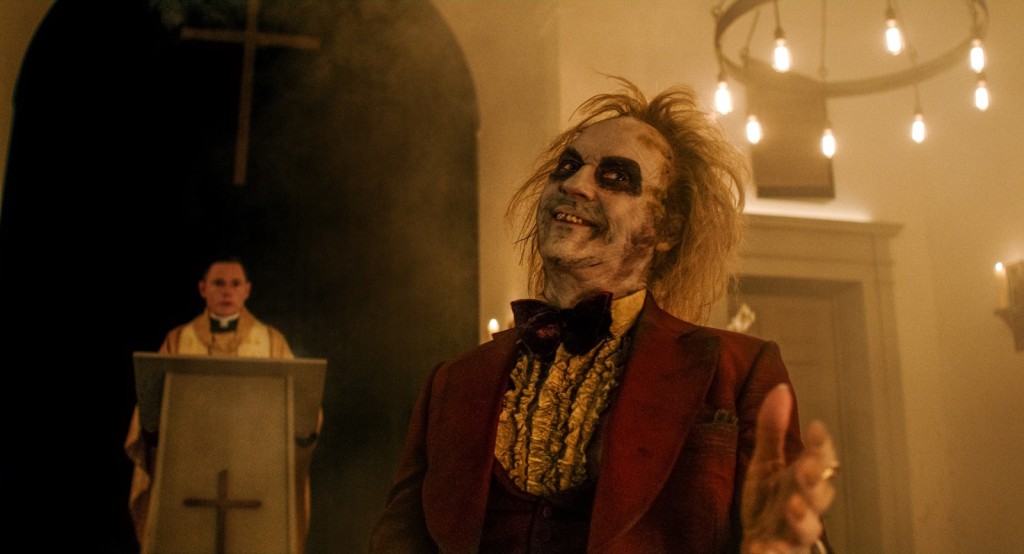
In creative terms, sequels are less intrinsically impoverished than remakes, given that they’re theoretically telling new stories rather than repeating old ones. Sure, the superhero industrial complex has mandated that any successful production automatically receive a follow-up, regardless of whether the original called for further expansion. But while it’s easy to mock the concept of Hollywood turning the magic of motion pictures into a content mill, dutifully cranking out new products along an assembly line so long as they keep making money, that notion ignores the fact that some sequels work as real movies, not just corporate commodities. Hell, 2024 alone has delivered a number of sequels—Dune 2, Inside Out 2, Furiosa (technically a prequel, whatever)—that are splendid entertainments, no matter their pedigree as intellectual property.
So the mere existence of Beetlejuice Beetlejuice, Tim Burton’s 36-years-in-the-making follow-up to his 1988 breakout hit, isn’t necessarily a consequence of studio-driven venality. Burton is no stranger to adapting popular material—in addition to Dumbo (not bad), his 21st-century output includes new-fangled takes on Alice in Wonderland (not great), Charlie and the Chocolate Factory (not good), and Planet of the Apes (very bad)—but this is the first straight sequel he’s made since Batman Returns (very good). He plainly has affection for this goofy universe, and his demented imagination offers the possibility for a new and appealing adventure that isn’t unduly tethered to its phantasmagorical past.
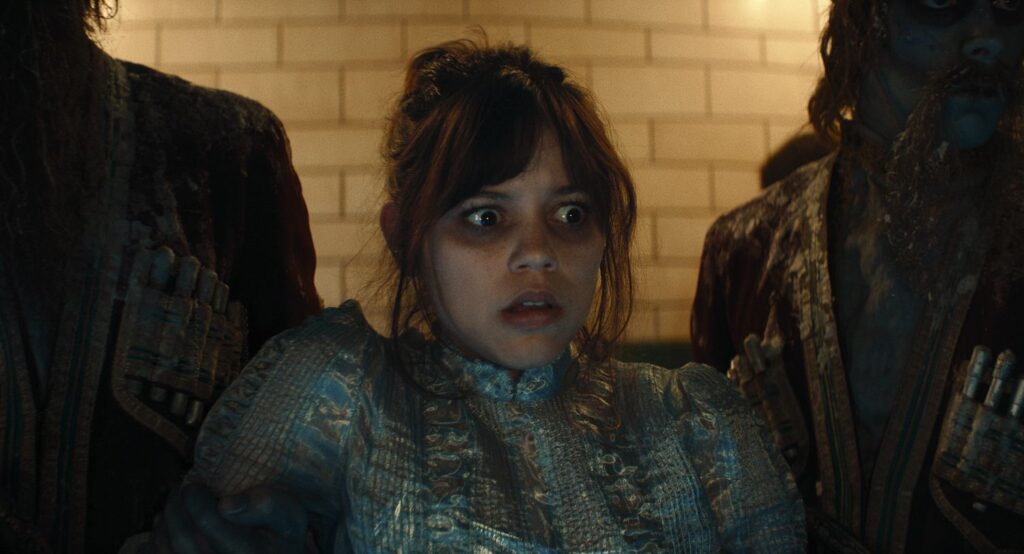
Why, then, does Beetlejuice 2 feel so attached, so beholden, to the first Beetlejuice? I’m not suggesting that Burton should have disregarded the original altogether—that isn’t how sequels work—but it’s dispiriting that his new creation cleaves so closely to its ancestor. Lydia Deetz (Winona Ryder), last seen floating in her sepulchral mansion while dancing to the dulcet tones of Harry Belafonte, remains haunted by visions of the titular “bio-exorcist” (Michael Keaton)—a lazy device that evokes in-vogue tropes linking supernatural horror with childhood trauma. She is also struggling to connect with her teenage daughter, Astrid (Jenna Ortega), a disenchanted youth whose aloof demeanor naturally recalls Lydia’s own bearing from the prior production. The central plot, meanwhile, revolves around the off-screen death of Lydia’s father, the affable patriarch previously played by Jeffrey Jones (who’s been largely absent from Hollywood for the past two decades in the wake of legal issues).
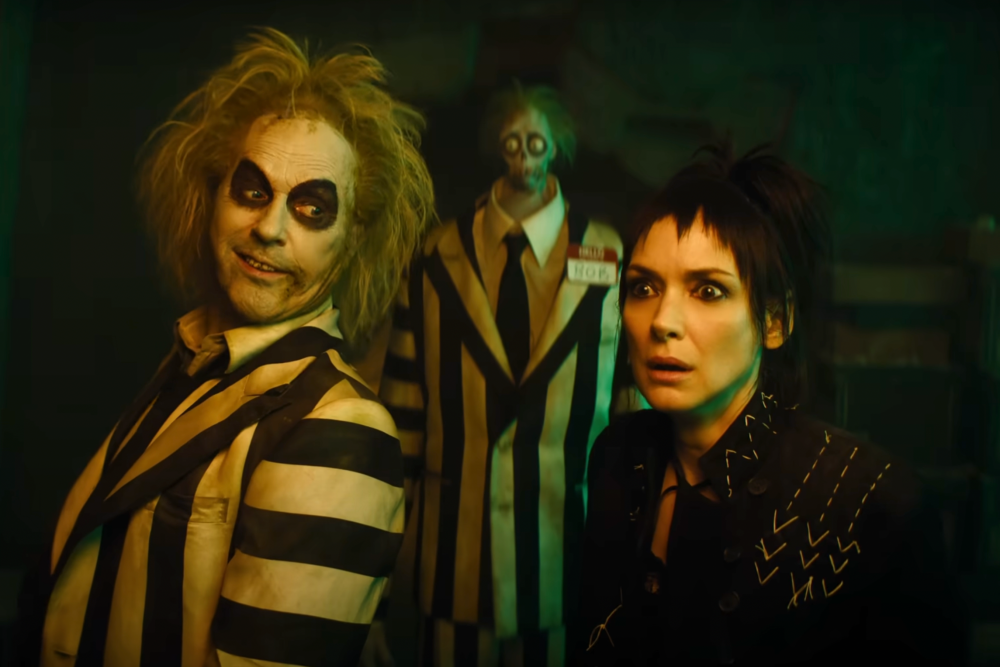
The saga of Beetlejuice 2’s development is torturous, which comes through in the movie’s stilted pacing and lumpy construction. Burton is a gifted director with a unique sensibility, so it’s alarming how little energy he’s able to muster during the film’s first 45 minutes. It’s tempting to attribute this malaise to the script’s distended quality (the sloppy screenplay is by Alfred Gough and Miles Millar, with Seth Grahame-Smith receiving a story credit), but the real problem is a lack of freshness. Ghosts, possessions, underworld bureaucracy, characters disappearing into scale models—we’ve seen all this stuff before, only now it feels imitative rather than inventive.
If anything, Beetlejuice 2 works best when it abandons its soggy plotting and just goofs around in the margins. There’s a seemingly random early sequence in which a dismembered woman (Monica Bellucci) reconstitutes herself from her sundry body parts, then sucks out the soul, Dementor-style, of a hapless janitor (Danny DeVito); its connection to the main action is hazy, but it hums with Burton’s macabre wit. Her emergence activates the bustling of an afterlife detective (a funny Willem Dafoe) who speaks in canned procedural dialogue—because he used to be an actor in generic cop pictures. Cute! Beetlejuice himself now has a staff of shrunken-headed minions, and if their appearance obviously trades on a late gag from the first film, they at least lend the administrative satire some visual flavor.
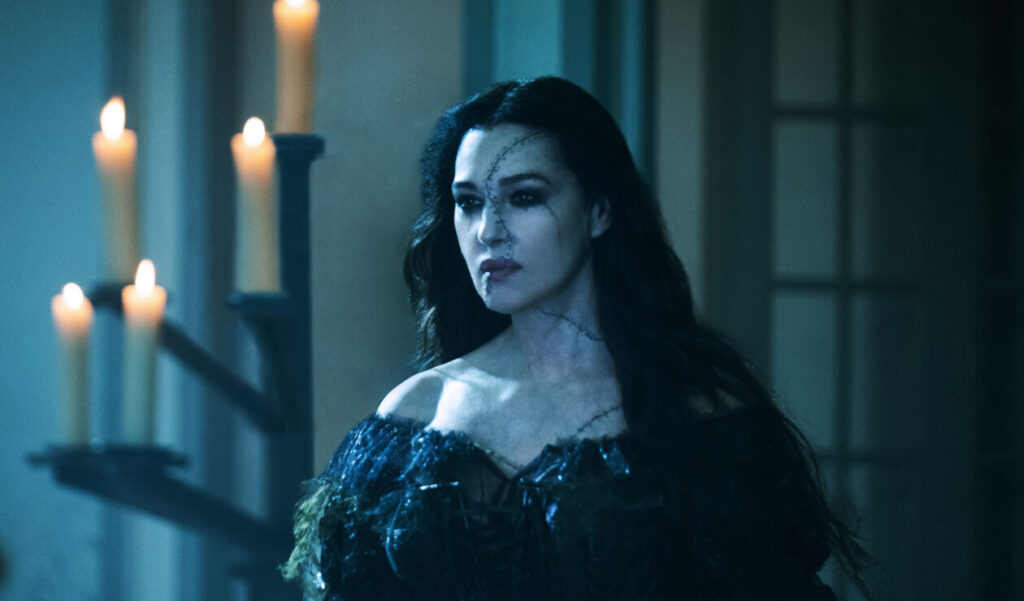
None of this really matters to the primary story, which is timid and sluggish. It isn’t until well into the movie’s second half, when Astrid gets whisked into the underworld and Lydia must grudgingly collaborate with Beetlejuice to rescue her, that it acquires any semblance of narrative momentum. The chicanery that ensues isn’t terrible—Keaton’s mugging is always appealing, and Ortega is a snug fit in this off-kilter cosmos—but despite Burton’s strenuous efforts, it lacks the vibrant whimsy of the original.
Does this mean Beetlejuice Beetlejuice is a craven exercise in soulless studio branding? Not really—it’s still decidedly a Tim Burton picture, even if it lacks his signature oomph. And it’s silly to pretend that nobody asked for such a sequel—not when it erupted at the box office, and not when Burton diehards have been clamoring for a follow-up for decades. But the fact that Beetlejuice 2 so feebly echoes its forerunner demonstrates the danger of returning to a cherished universe after such a long time away. It’s hard to reconjure that ineffable magic, just as it’s hard to reconstitute a foreign movie and invest it with the same winning spark. No doubt Hollywood will continue pursuing these lucrative avenues of (gulp) content generation. But when it comes to remakes and sequels, I’m asking for more than this.
Grades
Speak No Evil: B-
Beetlejuice Beetlejuice: C+
Jeremy Beck is the editor-in-chief of MovieManifesto. He watches more movies and television than he probably should.
